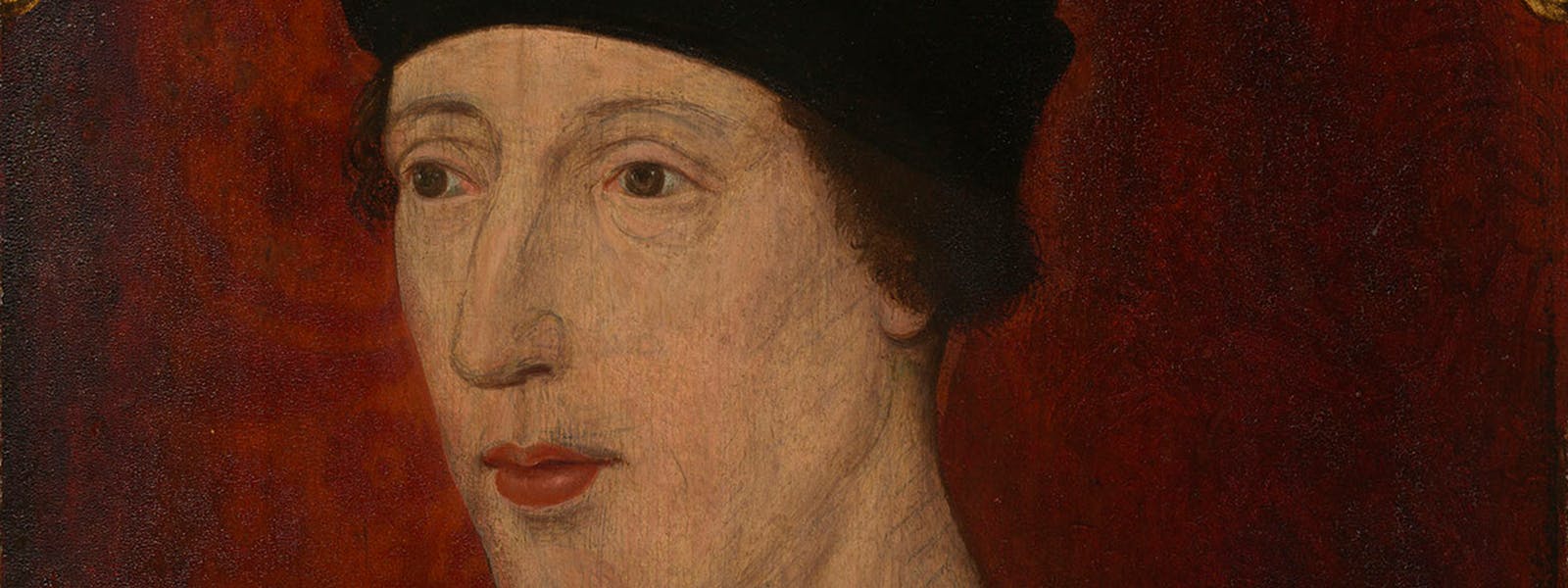
Intelligent and generous, he lived in his father's shadow and was killed for his throne
Henry VI was the youngest ever English monarch and the only English king to be crowned King of France. The son of the charismatic Henry V and Catherine of Valois, he became King of England at just eight months old. He was raised under both the shadow of his own impending reign and the illustrious legacy of his father.
Although Edward III had styled himself King of France in 1340, Henry VI was the first English monarch to personally undergo a French coronation – an impressive, and perhaps daunting, accolade for someone aged just nine years old at the time.
Henry is remembered for his promotion of religion and learning, but lived with debilitating mental illness and was deposed twice during the period referred to as the Wars of the Roses. His imprisonment by Edward IV eventually led to his brutal murder in the Wakefield Tower of the Tower of London.
Henry VI, The Infant King
Henry VI was born on 6 December 1421, the only child of the charismatic Henry V and Catherine of Valois. He became King of England in September 1422 at just eight months old, on the death of his father. By October of the same year, he became King of France on the death of his maternal grandfather Charles VI.
Since Henry was not yet at an age to rule personally, his uncles, Humphrey, Duke of Gloucester and John, Duke of Bedford were nominated as regents of England and France respectively and a council was set up to govern in the King's name.

Image: Henry VI painted in 1504-1520. © Royal Collection Enterprises Limited 2024 | Royal Collection Trust

Image: A page from The Fall of Princes, showing King Arthur taking a letter from two Roman emissaries. A young Henry VI may have read a copy of this cautionary book. Courtesy British Library, Harley 1766, f.217
Educating a King
Richard Beauchamp, Earl of Warwick, was appointed in 1428 as Henry’s personal tutor to 'generally nourish [Henry] and draw him to virtues and the eschewing of vices… laying before him mirrors and examples of times past'.
The young Henry had no shortage of these 'examples of times past' during his teenage years. He was the recipient of several lavishly illuminated volumes to aid his education. These included a beautiful prayerbook presented to him on Christmas Eve 1430 by his aunt, Anne, Duchess of Bedford. He may also have perused Duke Humphrey’s copy of Boccaccio’s cautionary compilation The Fall of Princes, but if he did, he should have paid more attention.

Image: A manuscript depicting the coronation of Henry VI at Westminster Abbey, 6 November 1429. Courtesy British Library, Cotton MS Julius E IV/3 fol. 23v
Crowned Henry VI of England and Henry II of France
Henry was crowned King of England in 1429 in Westminster Abbey, aged seven. He received the crown of France as Henry II at the Cathedral of Notre Dame in Paris in 1431, just after his ninth birthday. The Paris coronation was hastily brought forward owing to the dramatic French victories over English forces inspired by Joan of Arc, ‘the Maid of Orleans’, and the rival crowning in Reims of the French Dauphin as Charles VII.
The qualities it was hoped would be embodied in the young King’s rule were displayed in a remarkable set of pageants accompanying Henry’s procession into Paris in December 1431. Nativity and Epiphany scenes were performed during the ceremonial procession to symbolically reinforce the child-King’s messianic identity prior to his French coronation.
Among the many extraordinary features of these pageants, the young Henry encountered a doppelganger — a boy-king sitting majestically on a throne (with two crowns mysteriously hovering over his head) symbolising both the dual monarchy and the kingly exercise of justice.
On his return to London in February 1433 the young King was welcomed 'with all reverence' by a pageant of giants on London Bridge before being presented with an earthly paradise. The citizens of London assured him that his presence would transform the capital into a utopia of flowers and fruit trees.
The impression created by such imaginative civic displays could surely not easily be forgotten.
Living in the Shadow of Henry V
Henry VI undoubtedly stood in the shadow of his father, whom he’d never met. Henry V’s illustrious victories over the French in the Hundred Years War were still fresh in popular memory at the time of his son’s accession.
Henry did not possess his father’s imposing figure, nor did he excel in any physical capacity as an athlete, jouster or warrior. Instead, Henry was concerned to protect the church and achieve international peace. His devotion to prayer and spiritual concerns was perceived as the antithesis of his father's more physical demonstrations of royal power and authority in battle.
The King's Mother: Catherine of Valois
Catherine of Valois, a French princess, whose elder sister Isabella had been briefly married to Richard II, legitimated dynastically Henry V’s claim to the throne of France, but was the Queen Consort for a mere two years. Since she was only 20 on her husband’s death, she remained an attractive marriage prospect and potential focus of opposition to the regime of Henry VI’s uncles.
Catherine is recognised as the founder of what became the Tudor dynasty through her second marriage to Welshman Owen Tudor, the steward of her household. Their son, Edmund, Earl of Richmond, was the father of the first Tudor King, Henry VII.
Catherine never saw her son's personal rule as she died in childbirth in 1437 at the relatively young age of 36. Henry VI was 15 at the time. She was honoured with a solemn burial in Westminster Abbey. Her body originally rested in the Lady Chapel, but was disinterred when Henry VII started to rebuild it as a magnificent tomb for him and Elizabeth of York and as a memorial to Henry VI. Her coffin was taken to Henry V’s chantry chapel temporarily to await reburial.
Unfortunately, this reburial never happened and the open coffin of the daughter, wife, mother and grandmother of kings (in the words of her memorial inscription) 'long cast down and broken up by fire' became a curiosity for visitors. Finally, 'at the command of Queen Victoria,' it was allowed to 'rest at last' next to her first husband.

Image: A depiction of Henry VI's marriage to Margaret of Anjou from the 18th century. © National Portrait Gallery, London
Henry VI's Queen: Margaret of Anjou
Henry VI married Margaret of Anjou in 1444 – he was 23 and she, 15. William de la Pole, Earl of Suffolk deputised for Henry as the King was not able to be present in person at the ceremony held at Tours in France. Queen Margaret arrived in England in April 1445 with a large entourage after a difficult five-month journey.
Eight years after they married, Henry and Margaret had a son, Edward. The Queen had delivered what every medieval monarch craved – a male heir who, it was hoped, would continue the dynasty.
'A Great And Strong Laboured Woman'
Margaret was single-minded and had a forceful personality. Described by a contemporary writer as being 'a great and strong laboured woman who spares no pain to sue her things to an intent and conclusion to her power,' her personal patron saint was St Margaret of Antioch, normally pictured slaying a dragon.
Queen Regent in All But Name
The expectations of conventional medieval queenship and womanhood required Margaret to temper her actions and ambitions. During the later 1450s, when her husband was experiencing acute illness, she enjoyed practical control over her son, the Prince of Wales. In 1456, she moved the seat of royal power to Coventry, the Lancastrian heartlands. Linking herself with the exercise of the King’s prerogatives of justice and mercy, she became Queen Regent in all but name.
On various occasions, Margaret enjoyed visible pre-eminence, most notably when she entered and departed Coventry with the mayor, who carried the mace before her. More informally, in 1458 she walked hand-in-hand with Richard, Duke of York in a ritual display of reconciliation after the First Battle of St Albans – an unscheduled reversal of roles of king and queen.
Was Henry VI a Bad King?
In the context of medieval kingship, the monarch's personality and leadership qualities were paramount in inspiring confidence and loyalty.
Henry VI had the goodwill of the nation behind him on his accession. Yet his complex 39-year reign witnessed the loss of most of his French territories apart from Calais, endured rebellion in 1450. It is synonymous with the dynastic struggle and bloody civil war that became known as the Wars of the Roses.
Power-Hungry Nobles
Henry’s minority lasted for around 15 years, during which time power was devolved to a regency council of lords and ministers until he was old enough to rule in person. When he finally became King, power-hungry nobles were keen to hold on to the control they had had during his childhood. Eventually, they sought to manipulate him for their own benefit.
Financial Problems
Henry inherited a country under financial strain, having paid for many foreign expeditions. This was compounded by the depression that hit in the mid-15th century and difficulties in raising sufficient revenue from taxation and customs dues.
A Naïve King Who Avoided Conflict
Henry VI avoided conflict of any sort and often refrained from clear direction. While he preferred to encourage peace, he instead appeared naïve and ill-at-ease in political situations. His silence during council meetings, willingness to forgive and accommodation of his political adversaries led to difficulties with his supporters. His surrender of some of his French lands may have eased foreign tensions but did not go down well at home.
Henry VI's Mental Illness
Most seriously for his rule, in the summer of 1453, Henry suffered a debilitating breakdown that left him unable to walk or talk for over a year. Even the presence of his newborn son did not revive him.
The Queen and leading courtiers felt compelled to suppress news of the King's incapacity to maintain political stability and prevent any potential challenges to his authority.
The language used in accounts of this period, such as 'frenzy' and 'wit and reason withdrawn,' suggests that his behaviour was seen as erratic and that he was perceived to have lost his mental faculties: '[Henry VI] suddenly was taken and smitten with a frenzy and his wit and reason withdrawn.'
Records of Henry's Symptoms
Henry’s contemporaries observed various aspects of his lifestyle, behaviour, and appearance since before his first breakdown in 1453. Some these aspects suggest he may have faced mental health challenges. They included periods of silence, a perceived simplicity and naivety, tiredness, discomfort around women, a reported lack of passion, and a pallid and childlike appearance.
Medieval doctors subscribed to the now-discredited theory of the four 'humours': blood, phlegm, black bile, and yellow bile. They believed that illness and disease were caused by an imbalance of these bodily fluids. In Henry’s case, they used the term ‘phlegmatic man’ to describe his condition, believing that he was experiencing a dangerous imbalance of these humours.
'On the Verge of Heaven'
In ancient and medieval times, limited medical knowledge and prevailing religious beliefs often led to mental illness being interpreted in spiritual terms, either as demonic possession, punishment for sin, or as a sign of holiness and divine favour. These conflicting perceptions often resulted in stigmatisation or veneration of those with mental health conditions.
Henry's supporters perceived his introspective behaviour not as an illness but as a sign of holiness, and proof of his personal sanctity. They described him as, 'wont almost at every moment to raise his eyes heavenward like a denizen of heaven or one rapt, being for the time not conscious of himself or those about him, as if he were a man in a trance, or on the verge of heaven'.

Image: Edward IV painted in 1524-56. © Royal Collection Enterprises Limited 2024 | Royal Collection Trust
The Wars of the Roses
After his initial breakdown in 1453, Henry VI experienced periods of lucidity interspersed with relapses into his illness. During his more stable periods, he attempted to rule and make decisions, but his authority was often undermined by rival factions who sought to control the government.
Both Henry VI and Edward IV were direct descendants of Edward III and there had already been disputes in the family for the control of the throne. Henry VI's prolonged mental illness exacerbated existing tensions and rivalries, ultimately leading to the emergence of two opposing factions under Henry’s House of Lancaster (symbolised by the red rose) and Edward's House of York (white rose). This clash is now commonly known as the Wars of the Roses, or the Cousins War.

Image: The King's Private Chapel in The Wakefield Tower at the Tower of London. The chapel is associated with Henry VI who was supposedly murdered while at prayer in the chapel in 1471. © Historic Royal Palaces
The Mysterious Death of Henry VI
Tradition has it that Henry VI was assassinated at night with a mortal blow to the head in May 1471, whilst at prayer in a chapel off the king's apartments in the Wakefield Tower of the Tower of London.
Henry had previously spent over five years imprisoned in the Tower. His first period of incarceration, probably in the Wakefield Tower, lasted from June 1465 until October 1470. He was given food and a priest to say Mass, but on his release from captivity, he apparently looked dishevelled and rather unclean.
During this period, it is plausible that Henry’s mental health deteriorated further. However, it is possible that a narrative of mental illness was emphasised by both sides for theological and political propaganda respectively.
Henry died in mysterious circumstances during his second imprisonment at the Tower of London, between 21-22 May 1471. It was first thought he died of what was then described as melancholy (an excess of black bile). But gradually suspicions arose that he was murdered by agents of the Duke of Gloucester, a claim still unproven to this day.
However, Henry's death effectively ended the Lancastrian line which was certainly convenient for Edward IV.

Image: A design of a proposed sepulchral monument for Henry VI at Westminster Abbey, dated late 15th or early 16th century. Courtesy British Library Cotton Augustus II.1
Where was Henry VI Buried?
Henry VI’s body had a curious afterlife. Following his death, it was quickly embalmed with spices and put in a wooden coffin. It was taken to St Paul’s Cathedral and then onto Blackfriars.
Henry had specified burial in Westminster Abbey, close to his father, Henry V, and its royal founder, St Edward the Confessor, to whom he was religiously devoted. The King had reportedly discussed it with the then Abbot of Westminster and even marked out the dimensions. The circumstances of his death and fraught political situation, however, ruled out the possibility and his body was taken up the River Thames to be buried in the Lady Chapel at Chertsey Abbey instead.
Martyrdom and Reburial
Henry's Shrine During Richard III's Reign
For all his adversities in life, in death Henry VI was viewed as a martyr. Pilgrims flocked to his shrine at Chertsey Abbey. To capitalise on this popular sanctity and the financial rewards on offer from pilgrim’s donations, Richard III (who some believe responsible for his murder) had Henry’s body moved to St George’s Chapel, Windsor at a cost of £5 10s 2d (about £4,000 today). It was eventually reinterred in a newly fashioned shrine opposite the tomb and chantry chapel of his usurper, Edward IV.
Henry VI In The Tudor Period
Equally convinced of the political advantages of his uncle’s saintly qualities, Henry VII collected accounts of Henry’s purported miracles and petitioned the pope to have him canonised.
Henry VIII was devoted to Henry VI’s memory and the Lancastrian dynastic link. He tried to recapture the glory days of Henry V’s victories against the French and venerated his great uncle's shrine when arriving and departing Windsor Castle. Although the tomb chest and effigy no longer exist, an iron collection box marked with an 'H' remains at his grave.
Margaret of Anjou after Henry's Death
Margaret, who with her son, Edward, had provided a focus for the Lancastrian forces during the dynastic conflict, was captured in 1471 and imprisoned in the Tower of London, just after the death of her husband.
Later taken to Wallingford Castle, Margaret remained under house arrest until ransomed by the French King, Louis XI, in 1475. Back in France, although no longer the force she had been, she was denied her personal lands and received only a modest pension before she died in 1482.
Henry VI's Legacy
Today Henry VI is remembered for his promotion of religion and learning, which were exemplified in his pious endowment of King’s College, Cambridge and its sister foundation at Eton. For nearly 600 years, scholars and musicians have benefited from his vision and generosity. He also lives on today in the works of Shakespeare who penned three history plays based on Henry VI’s life and the events of his reign.
Since 1923, Henry’s death has been marked every year on the evening of 21 May with the Ceremony of the Lilies and the Roses at the Tower of London. During this solemn ceremony, a procession makes its way to the Wakefield Tower to lay gifts of lilies and roses, symbolic items that are placed at the site where he died. The ceremony is attended by representatives from King's College, Cambridge and Eton College. A similar commemoration is held in Henry’s chapel at Cambridge, where white roses (King's) and white lilies (Eton) are similarly placed on his tomb at St George's Chapel, Windsor.
A hymn addressed to 'Rex Henricus' (King Henry) urges the King to 'be a friend in time of trouble' and to 'let virtue grow and charity glow'.
Although the author also ironically pleads 'let us not, through toil and pain, meet with sudden death,' it is perhaps fitting that Henry’s eventual fate accords with the faith and philosophy set out in one of his own prayers, in which he was resolute for God to 'deal with me mercifully according to your will'.
BROWSE MORE HISTORY AND STORIES
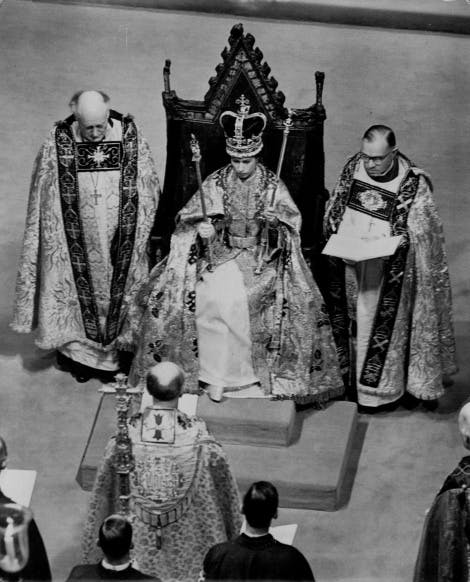
Coronations Past and Present
An ancient ceremony, largely unchanged for a thousand years
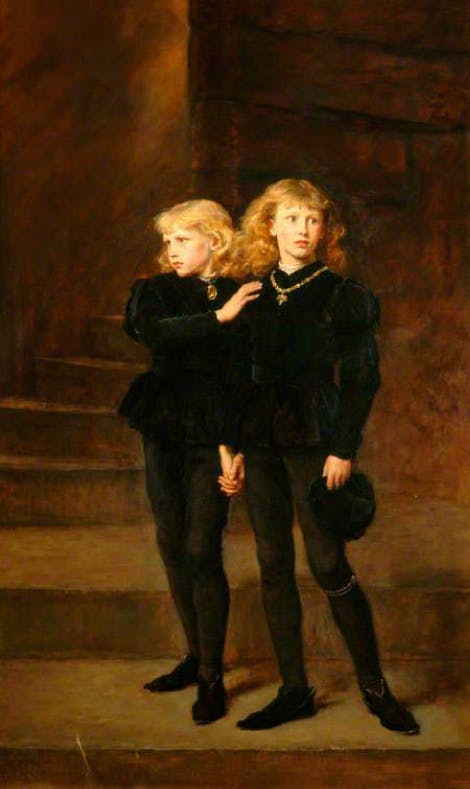
The Princes in the Tower
Murdered or survived – what happened to Edward and his younger brother Richard?
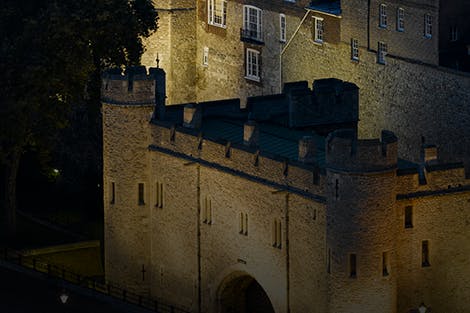
The Medieval Palace
Luxurious royal lodgings from the 1200s
EXPLORE WHAT'S ON

- Things to see
Medieval Palace
Step inside the luxurious lodgings of two kings, meticulously re-created in the Medieval Palace at the Tower of London.
- Open
- Tower of London
- Included in palace admission (members go free)

- Tours and talks
Audio Guide Tour
Explore deeper with the Tower of London audio guide tour. Discover extra information about the Tower's history, plan your day and find out more about our cafés and shops.
- Available
- Tower of London
- Separate ticket

- Things to see
Imprisonment at the Tower exhibition
Learn why people ended up as prisoners in the Tower of London, in the very rooms where some of them were held.
- Open
- Tower of London
- Included in palace admission (members go free)
Shop online

Shop Raven gifts
Legend has it that if the six ravens ever leave the Tower of London, the Tower and the kingdom will fall. These products have been inspired by the Ravens that live at the Tower of London.
From £3.00
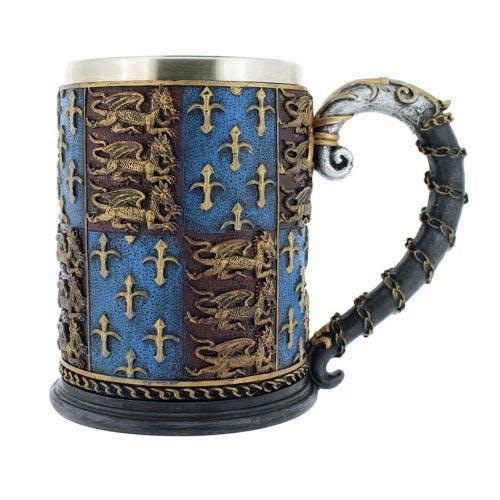
Medieval knights tankard
Medieval knights tankard inspired by the royal arms of England. Featuring intricate dragon detailing this beautifully designed mug has a detailed chain entwined around the handle. Perfect for re-enactments or a gift for someone who loves all things medieval.
£30.00
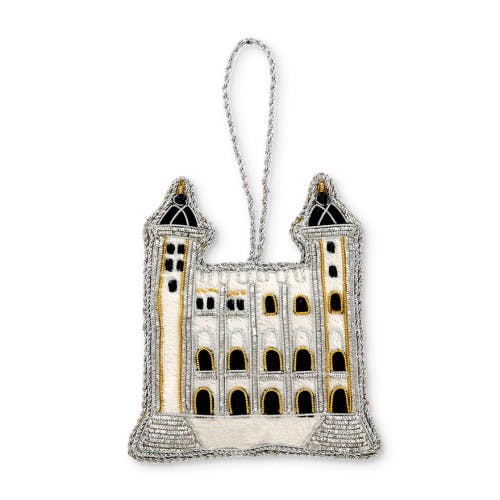
Tower of London White Tower luxury embroidered hanging decoration
Our exclusive premium decoration of the White Tower, the centre of the Tower of London. Built on the orders of William the Conqueror, the White Tower has now stood for almost 1000 years.
£30.00
